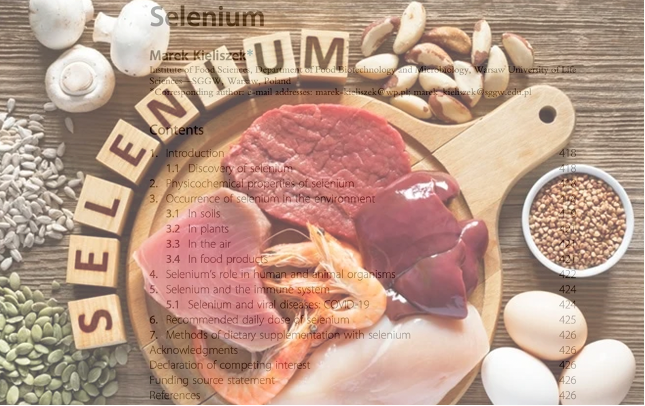Selenium is an element commonly found in the environment at different levels and was discovered by Swedish chemist Jons Jacob Berzelius in 1817. Its compounds are found in soil, water, and air. As a trace element that is essential for life, selenium has a key role in protecting cells from oxidative stress. It plays an important role in regulating inflammatory processes in the body as a cofactor of the enzymes responsible for antioxidant protection of the body.
The World Health Organization recommends that each adult take 30 to 40 mcg of selenium per day, and the maximum dose should not exceed 400 mcg/day. This element, if taken in excess, may have a toxic effect in the form of joint diseases and diseases of the blood system. While selenium deficiency is associated with a number of viral diseases, including COVID-19, persistent selenium deficiency in the body may also impact infertility, so prompt supplementation is needed in such cases.
Selenium is found in raw materials of plant and animal origin, and it can be introduced into the human organism through food, so food is the primary method of delivering selenium to the body. In some areas, the low levels of this element in the soil and plants lead to a lack of it in the diet, which can lead to the occurrence of serious diseases of the cardiovascular system. A deficiency of this element is also found in patients with cancer after radiotherapy and chemotherapy. In such cases, ample preparations containing selenium should be provided. The most popular sources available are supplements containing inorganic salts of selenium.

Kieliszek M. (2021). Selenium. Advances in food and nutrition research, 96, 417–429. [Link]
